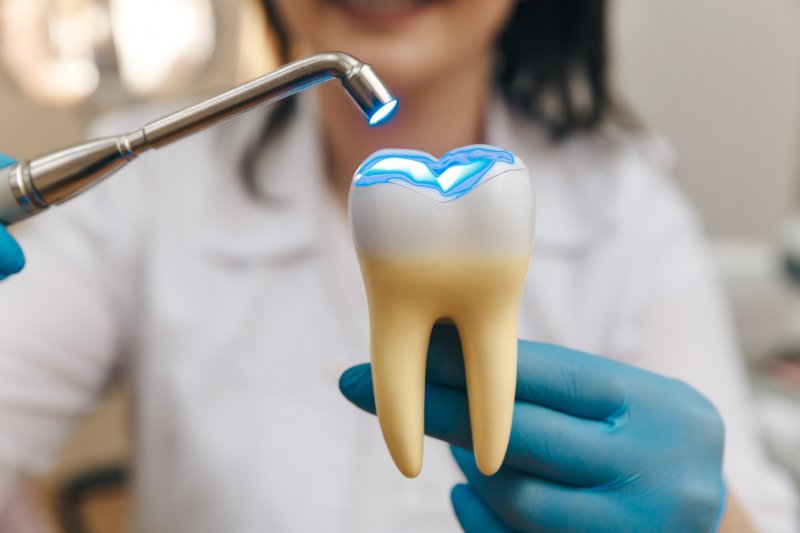
Dental fillings can be a lifesaver for people who are in serious pain, quickly patching up any cavities or decay that you’re experiencing so that you can get back to the things that matter most to you.
If that’s your goal, then you probably don’t want to have to spend much time thinking about how long you can expect to keep your filling. However, everything needs to be replaced eventually, and your restorations are no different. If you’re curious, here’s how long you can expect any given filling to last.
How Long Do Fillings Last?
Dental fillings are a remarkably versatile treatment, capable of using a wide variety of materials to repair damage in many different places. As a result, there’s also a pretty wide variance in how long you can expect a dental filling to last.
The biggest variable is the material that your filling is made out of. The two most common materials are metal amalgam and tooth-colored composite resin; composite fillings last around 7-10 years, while amalgam fillings tend to endure for much longer, around 10-15.
Which Material Should I Use?
Since the topic came up, it’s worth briefly comparing these two materials. Amalgam fillings are the silvery fillings that you may be familiar with. They’re inexpensive and, as was mentioned, very durable. However, they also expand and contract when exposed to extreme temperatures, which leads to uncomfortable tooth sensitivity.
Composite fillings are tooth colored, blend in perfectly with the rest of your tooth, and don’t expand due to temperature. They’re incredibly high-quality but don’t last quite as long as amalgam.
How Do I Know If My Filling Needs to be Replaced?
Eventually, your filling is bound to wear down or fall out, meaning that it will need to be replaced. Even if your filling doesn’t completely come out of your mouth, you could start to notice the familiar stinging feeling that led you to see your dentist in the first place. If you do, you should call your dentist about an exam.
Speaking of, if you have a filling, it’s even more important than usual to get regular checkups and cleanings. Your dentist will be able to use X-rays to see what’s happening under the surface and ensure that your filling doesn’t need to be replaced.
About the Author
Dr. Louis Olberding is a dentist who believes that the best dental care has two components: a sound diagnosis, and a solid treatment plan customized to every patient. That’s why he takes time to understand his patients as individuals. Dr. Olberding received his DDS from the University of Nebraska Medical Center College of Dentistry, and since then has continued his learning with Spear Education.
If you have any questions about dental fillings, he can be reached at his website or by phone at (402) 488-2325.
